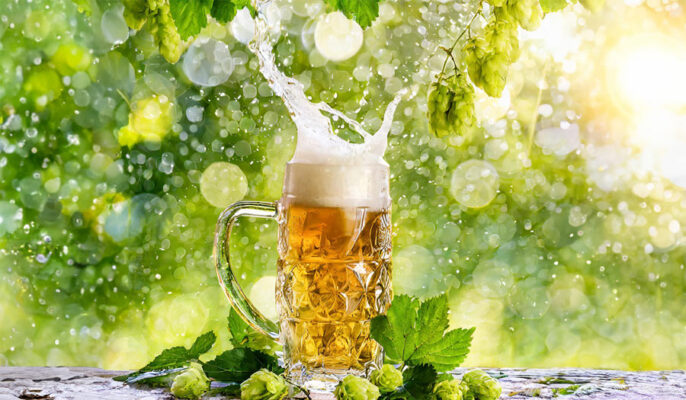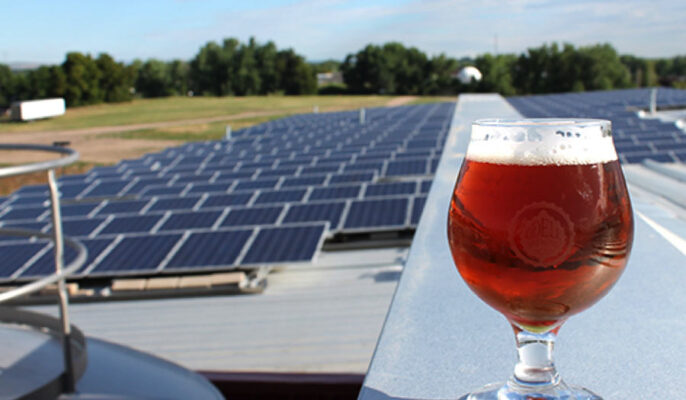Breweries are growing rapidly, and breweries of all sizes are popping up all over the place, but they consume a lot of resources and produce a lot of waste. To address this, breweries around the world are increasingly adopting sustainable practices throughout the production process. From reducing resource consumption to investing in renewable energy to optimizing packaging and distribution, breweries are overhauling the way they operate to create a greener future. Eco-friendly green breweries are not only committed to producing high-quality beer, but they are also actively working to minimize their negative impact on the environment, contributing to sustainable development through innovation and continuous improvement.
What is sustainable and eco-friendly brewing?
Eco-friendly brewing refers to the adoption of a range of environmental measures and sustainable practices in the beer brewing process to minimize negative impacts on the environment and to promote the efficient use of resources and the preservation of the ecological balance. Sustainability in brewing reflects smart and efficient system design and operation. This efficiency results in a lower impact on resources such as water, electricity, landfill space, capital, and employees, but more importantly, it is a smart business practice that is better for the community in which you operate.

What are the challenges facing beer brewing?
Probably the biggest challenge in sustainable brewing is convincing consumers of the importance of sustainable brewing. Producing quality, sustainably brewed beer takes more effort and is more challenging from a logistical and financial standpoint. If beer drinkers don’t understand or care about sustainability, then brewers have no financial incentive to produce them. In an environment where beer choices are numerous and value propositions are often confusing or misleading, it is difficult to determine which brewers are leading sustainability initiatives.
- Energy Consumption and Carbon Footprint: The brewing process requires a lot of energy, especially heat, and traditional brewing methods can lead to higher carbon emissions. Reducing energy consumption, optimizing production processes, and adopting renewable energy sources are among the key challenges.
- Water management: Beer brewing requires large amounts of water, and the efficient management and conservation of water resources, as well as the treatment of wastewater to minimize the impact on the environment, are key challenges.
- Focuses on the selection of sustainable raw materials, such as organic barley and sustainably grown hops, while ensuring a stable supply of raw materials.
- Waste treatment and environmental impact: How waste and wastewater generated during the brewing process can be effectively treated and recycled to reduce pollution of soil, water, and air is a challenge for environmental sustainability.
- Market Competition and Consumer Demand: Consumers are becoming more concerned about environmental protection and sustainability, and manufacturers need to differentiate themselves from their competitors through innovation and marketing strategies while meeting market demand.
- Regulatory and Policy Implications: Environmental regulations and tax policies for the brewing industry may vary in different countries and regions, and companies will need to comply with the regulatory requirements of each location, which may increase costs and operational complexity.
What makes a brewery sustainable?
- Renewable energy: Many eco-friendly breweries around the world now use renewable energy sources such as solar, wind, or biogas to power their operations.
- Efficient Equipment: By upgrading to state-of-the-art, energy-efficient brewing equipment, sustainable brewers have managed to drastically cut down on electricity and water consumption. For example, state-of-the-art steam condensers can reduce a brewery’s energy consumption by up to 60 percent!
- Eco-friendly ingredients: Responsibly sourcing organic ingredients is a top priority for many green beer brands.
- Waste Reduction: Environmentally conscious breweries place a strong emphasis on reducing waste by ensuring that spent grains are reused as cow feed rather than dumped. Many breweries have also switched to using recyclable cans instead of glass cans to reduce their carbon footprint.
How to successfully transition to a sustainable brewery?
There are many other simple ways to brew beer more ecologically and economically by choosing the right equipment, technology, and ingredients.
原材料の選択
As a brewer, use local, fresh, and organic raw materials whenever possible to reduce shipping and storage costs and toxic chemicals. You can even try growing your hops and other plants for brewing. Cultivating a home beer garden can help reduce shipping and packaging costs, and it’s a fun and rewarding activity. Other ingredients, such as herbs, spices, fruits, and vegetables, are easy to grow at home, or you can also source them locally and organically.
Optimizing the brewing process
Eco-friendly brewing methods are often efficient because you use fewer supplies and materials, which is good for your wallet and the world. So first, make sure your homebrew tastes good. Following standard cleaning and sanitation practices, properly storing ingredients, and maintaining the right fermentation environment can avoid bad batches. Even if you think your beer is worth the drain, you may be too self-critical. Give a friend or two a taste before you dump it. Who knows? They might like it.
But some beers aren’t worth keeping. If a batch of beer is unbearable, spread it on the flowerbed or lawn. The nutrients in the beer are beneficial to plant growth.
Water conservation
Water is the first consideration in beer brewing, as beer is about 95% water. The water used must be of high quality, but it is also important not to waste our main brewing resource. As water resources are depleted, brewing costs may be higher. Therefore, our goal is to achieve zero waste, which means that all water used to brew beer is as clean when it leaves the process as when it enters.
Implement a closed-loop water system to maximize water recovery and reuse, and reduce dependence on natural water resources. Backwash, soaking, or bathing often require a lot of water to reach the pouring temperature. Instead of wasting this warm water, use it to clean equipment, fill hot beer tanks for the next batch of beer, or collect it for animal drinking water or watering plants.

Energy management
Brewing requires a lot of energy, especially the heating and cooling processes. Adopting energy-saving practices can reduce the carbon footprint and operating costs of a brewery.
- Renewable energy: Investing in renewable energy sources, such as solar panels or wind turbines, can provide a sustainable and cost-effective energy supply.
- Heat recovery system: Installing heat exchangers to capture and reuse heat from the brewing process can significantly reduce energy consumption.
- LED lighting and energy-saving equipment: Switching to LED lighting and using energy-saving brewing equipment can further reduce energy use.
Waste recycling
Waste management is an important aspect of sustainable brewing. By adopting effective waste reduction and recycling strategies, breweries can minimize their impact on the environment.
- Serpent lees recycling: Serpent lees are a byproduct of the brewing process and can be reused as animal feed, used for baking, or even converted into biofuel.
- Composting: Organic waste such as hops and yeast can be composted and used to enrich the soil, thus forming a closed loop of the brewery’s waste cycle.
- Recyclable packaging: Using recyclable or biodegradable packaging materials, such as cans and bottles made from recycled materials, helps reduce waste and promotes a circular economy.
Employee education
Increase employee awareness and participation in sustainable development, motivate them to actively participate in environmental protection actions through training and education, establish environmental protection cultural values, and enable employees to understand and support the company’s sustainable development goals.
醸造設備
The key to brewing equipment is to recycle old parts and always consider durability. You can get many important parts for free or very cheaply from people who no longer need them. For example, restaurants have a lot of five- and six-gallon plastic buckets. Since restaurants have a lot of these plastic buckets, you can usually find one or two that are clean and not worn (wear is a breeding ground for spoilage microorganisms). Buying a stainless steel brew kettle is safe, durable, has a long service life, and is ultimately recyclable, which can reduce the demand for virgin resources through recycling and reprocessing. Stainless steel brew kettles reduce resource consumption and waste generation and meet the sustainable principle of efficient resource utilization.
Brewery Sustainability Project
- Automated systems for boilers, chillers, and air compressors: Steam, cold glycol, and compressed air are very expensive to generate, so their performance can be optimized using automated management systems (much like cruise control in a car).
- Insulation: Anything hot or cold in the brewery, such as tanks and pipes, should be thoroughly insulated to save electricity and fuel. This is also done for operator safety and to prevent contamination from mold growth.
- Water treatment and recycling: This depends on the location of the brewery and the relative costs of fresh water, sewer bills, etc. Water recycling saves water and eliminates sewer or transportation fees. In some cases, it can also produce natural gas, heat, and electricity for immediate use by the brewery.
- Heat recovery: There are many ways to recover the heat generated by brewery operations, the most obvious of which is recovering the heat generated during the wort cooling process. Another example is the use of a drum condenser to recover the heat generated by the water evaporating as the wort boils in the pot.
Sustainable brewing practices are critical not only to reducing the environmental impact of craft breweries but also to meeting growing consumer demand for environmentally friendly products. Join Sustainable Brewing to embrace the environment and become a green brewing brewery.




